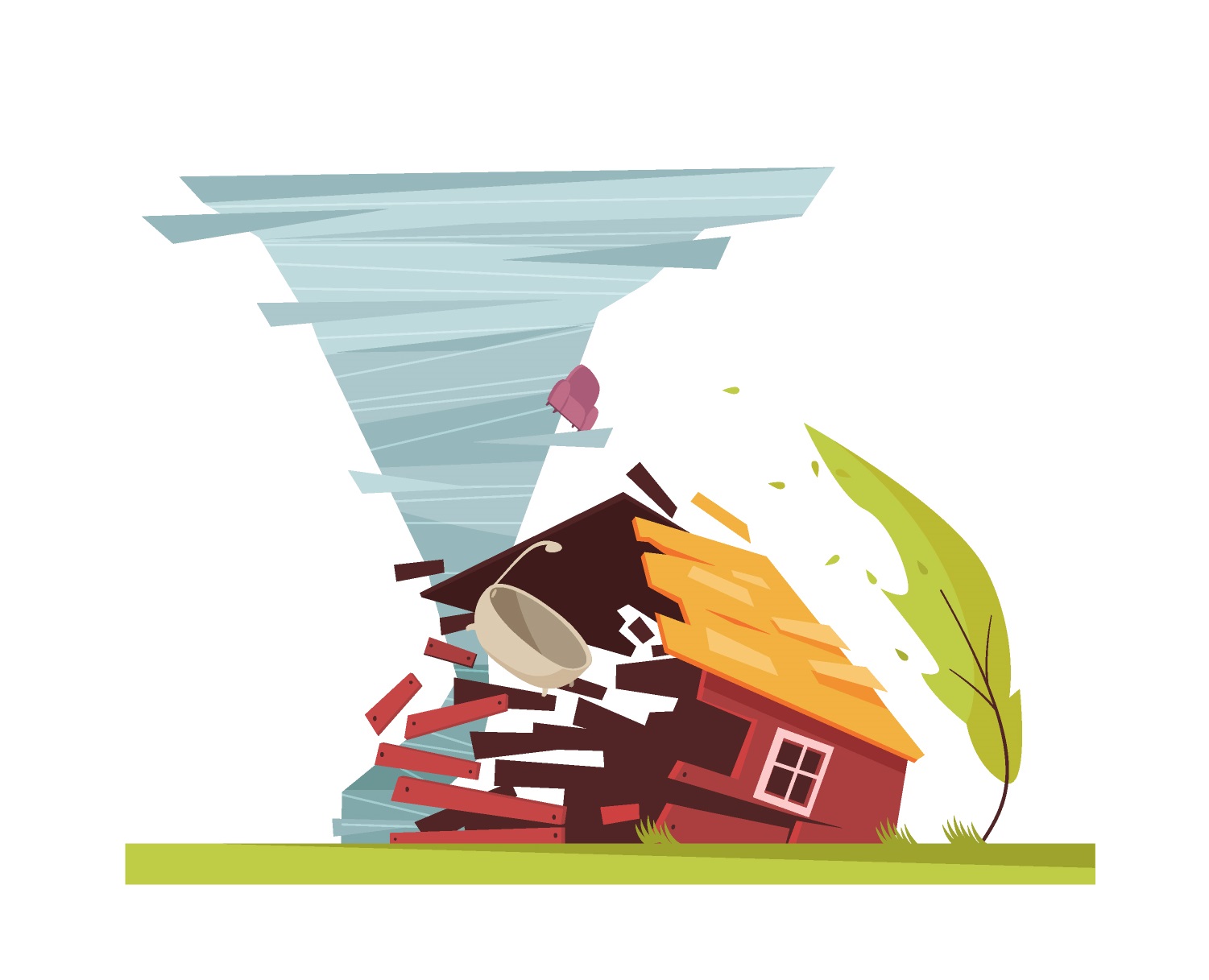Hazard Awareness: Tornadoes

Why Do Tornadoes Occur?
Tornadoes can arise from two types of thunderstorms, supercell and non-supercell. Supercell thunderstorms occur when the wind above the ground blows in two different directions and at different speeds – this is known as wind shear. The wind shear creates the tornado which begins by rotating horizontally and then moving vertically as warm air rises. Typically, tornadoes emerge from supercell thunderstorms – which create dangerous tornadoes (National Severe Storms Laboratory, 2022).
Supercell thunderstorms do not always create tornadoes though – less than 20% result in a tornado. Non-supercell tornadoes emerge from quasi-linear convective systems – in short, this means when there are multiple thunderstorms in a line formation. Land spouts and waterspouts are a type of non-supercell tornado that can occur on land or in water. This type of non-supercell tornado occurs when a thunderstorm cloud has not yet fully expanded – but without the rotation of a tornado (National Severe Storms Laboratory, 2022).
The deadliest tornado in Canadian history, the Regina cyclone, occurred on June 30, 1912, and resulted in 28 fatalities and 300 injured. In 2007, Canada’s first EF/F5 tornado was reported in Manitoba, the Elie tornado. No F5 tornadoes have occurred in Canada since then. Tornadoes occur throughout the country, leaving no province or territory unaffected. In Canada, tornadoes occur most often in the Prairies, Ontario, Quebec, and New Brunswick. Tornado season in Canada occurs from March to September with Ontario seeing an average of 12 tornadoes annually (Emergency Management Ontario, 2021). The Northern Tornadoes Project recorded an occurrence of 100 tornadoes across Canada in 2021, which was a 170% increase compared to 2020.
In 2013, Canada adopted the Enhanced Fujita Scale to identify tornado severity. The EF scale classifies the severity of a tornado based on the observed damage caused by the tornado and the wind strength. The six-point EF scale ranks tornadoes from the weakest tornado 0 to the strongest 5. In Canada, the most damaging type of tornadoes (EF/F4) occurs less than 0.5% of the time and EF/F0 and EF/F1 Tornadoes account for 90% of the tornadoes that occur in Canada (Northern Tornadoes Project, 2022).
Tornado Watch vs. Tornado Warning
A tornado watch is issued when there is a risk of a tornado occurring in your area. Be prepared, alert and seek shelter if threatening weather occurs. A tornado warning is issued when a tornado is spotted in your area. Threatening weather is imminent take shelter indoors immediately. If you are unable to shelter, indoors find a low-lying area such as a ditch or crouch down in the car and cover your head.
References
Emergency Management Ontario. (2021). Tornadoes. https://www.ontario.ca/page/tornadoes.
National Severe Storms Laboratory. (2022). Severe Weather 101: Tornado Basics. https://www.nssl.noaa.gov/education/svrwx101/tornadoes/.
Northern Tornadoes Project. (2022). Northern Tornadoes Project. https://www.uwo.ca/ntp/.
Image by macrovector on Freepik